
Home Institution: Xavier University
REU Mentor: Ben Hackel
Affinity Maturation for B7-H3 Binders
B7-H3, an important immune checkpoint inhibitor of T-Cell function, is a common tumor vasculature biomarker that is overexpressed in various cancers. Its overexpression is linked with tumor growth and metastasis. Ligands that bind to target antigen with high affinity and specificity could have therapeutic and diagnostic uses. Gp2 and affibody are protein scaffolds that have been previously evolved to bind B7-H3 with nanomolar affinity. Using error-prone polymerase chain reaction, affibody and Gp2 proteins will be affinity matured and engineered via yeast surface display, creating a 2.0 library. Stringent magnetic and florescent activated cell sorting techniques will sort cells for picomolar binding affinity, specificity, and stability. The proteins will be tested for functionality in the human body by undergoing thermolysin and thermostability. The top performing ligands will have low picomolar affinity to B7-H3. These proteins can be deep sequenced to better understand them.
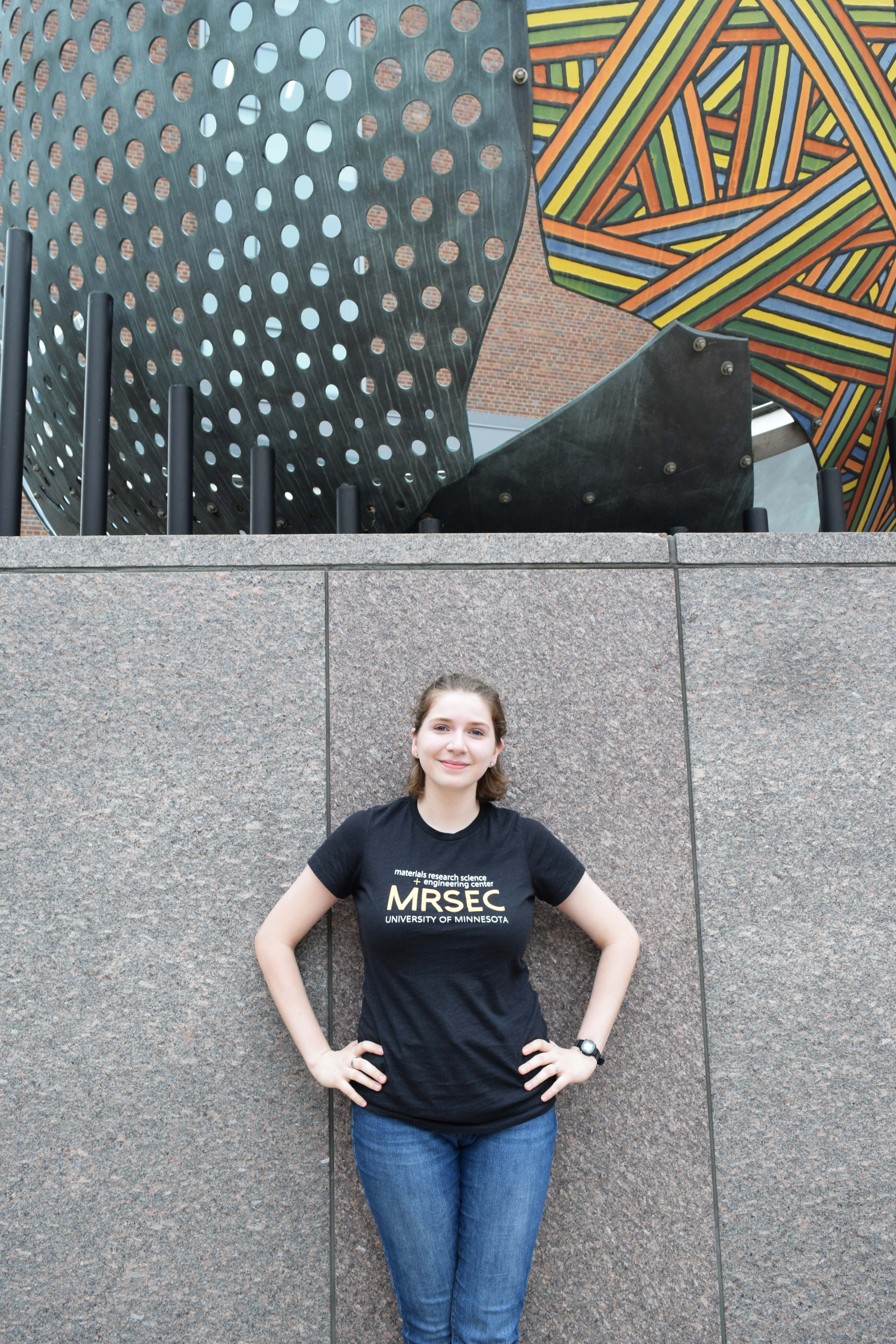
Home Institution: University of Texas Rio Grande Valley
REU Mentor: Chris Ellison and Frank Bates
Understanding polymer shear profiles when processed by Micro Compounders
The results of this research will help provide a better understanding of the processing conditions in the DSM Xplore 5 and 15 cc micro compounders. Measurements obtained in the micro compounders will be compared to those measured with an ARES-G2 rheometer for a range of shear rates, temperatures, fill volumes and polymers. The measurements can be used to evaluate the accuracy of the micro compounders and scalability between the systems. Rheometer data can aid identifying viscosity changes related to the polymer architecture and help hypothesize the impact that simple and extensional shear have when processing. Polymers used are High Density Polyethylene (HDPE) with a linear architecture, Low Density Polyethylene (LDPE) showcasing a long chain branched structure, and Linear Low Density Polyethylene (LLDPE) exhibiting the same architecture with smaller branches.
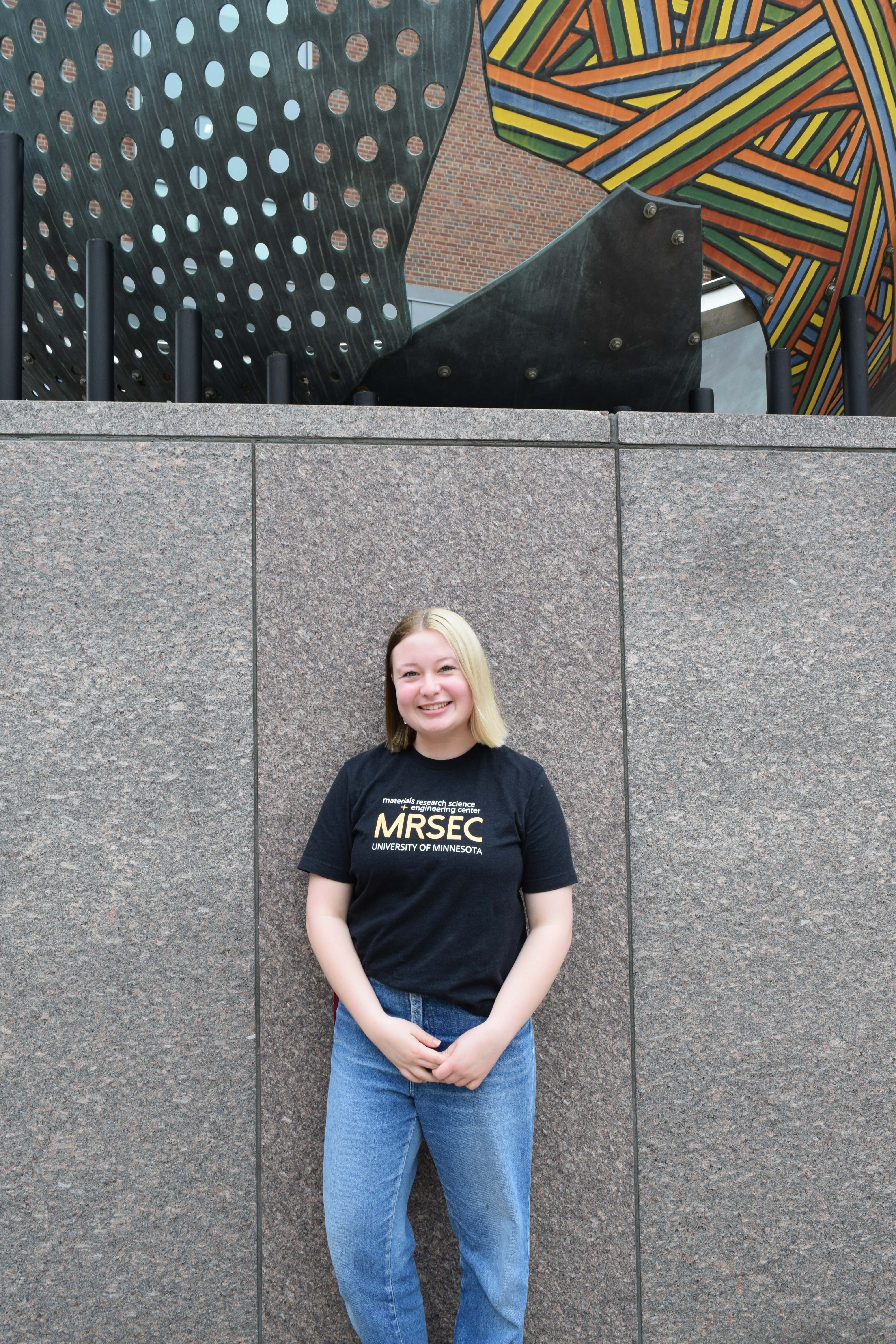
Home Institution: University of Minnesota Morris
REU Mentor: Boya Xiong
Developing antimicrobial nanocrystalline cellulose filters enabled by a natural amphiphilic peptide coating
Synthesized sterically stabilized nanocrystalline cellulose (SNCC) will be used as a substrate to functionalize antimicrobial peptides for removing pathogens in drinking water. Amphiphilic and cationic proteins found in the seeds of Moringa oleifera (MO), a tree rich in nutrients native to many tropic countries, exhibits excellent antimicrobial properties. The proteins extracted from MO seeds will be functionalized to the surface of SNCC that was synthesized from wood pulp with pretreatments. Two types of protein immobilization include covalent linkage of amines from the protein to dialdehydes of SNCC, and electrostatic sorption of the protein on SNCC oxidized to carboxylic acids. Protein concentration and the level of oxidation of the SNCC will be explored to yield sufficient protein coating that is functional after immobilization. Aldehyde content of pretreated SNCC will be measured by titrations of Schiff bases from hydroxylamine reactions with aldehyde. Morphology of protein functionalized SNCC will be visualized and measured with atomic force microscopy (AFM), scanning electron microscopy (SEM), dynamic light scattering (DLS), and contact angle (CA). Standard deadend filtration was used to assess the permeability of a filter of the protein-functionalized SNCC. The proposed research yields a sufficient and functional protein coating on filtration material for waterborne pathogen removal.
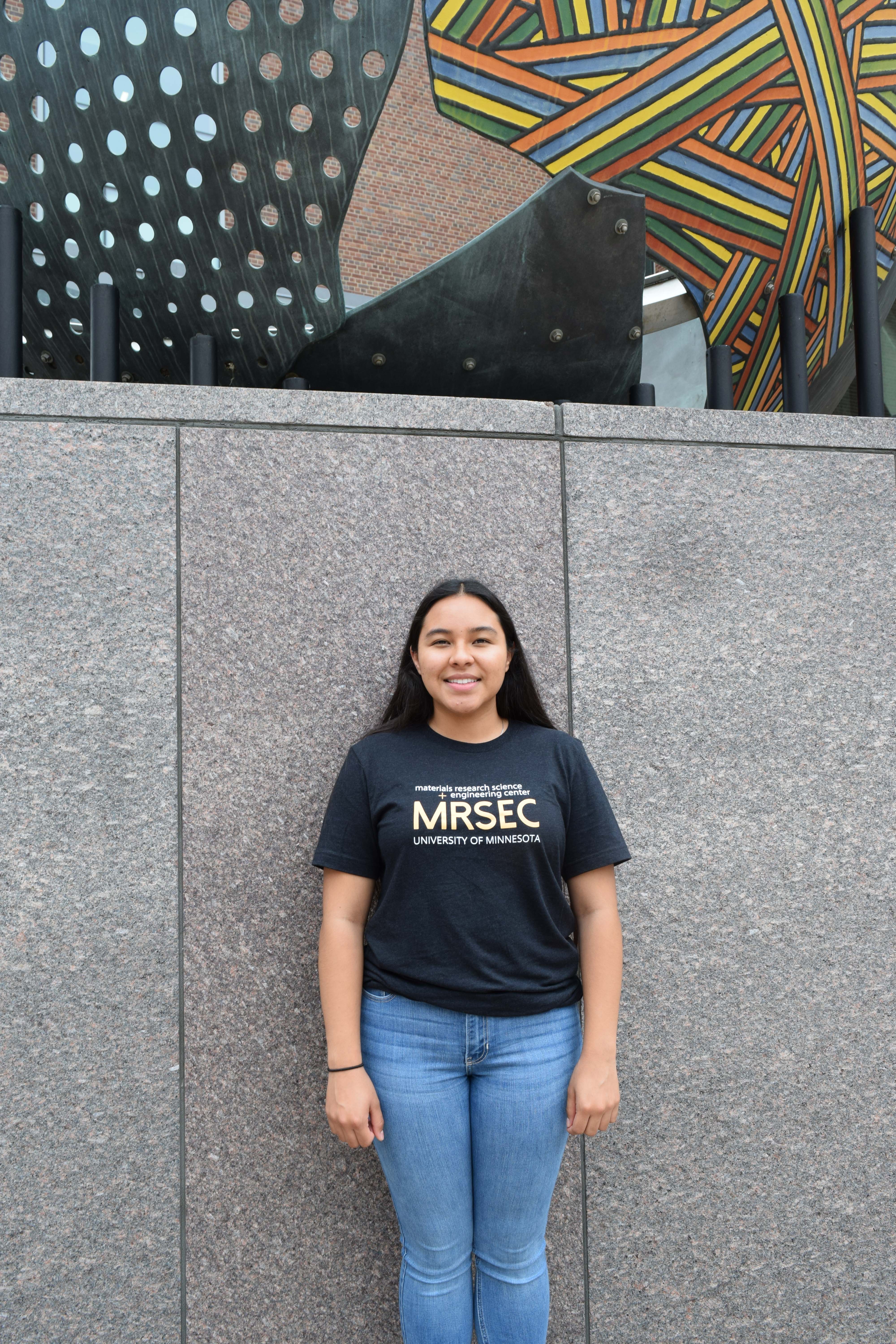
Home Institution: University of California, Los Angeles
REU Mentor: David Poerschke
Phase Equilibrium Study Of Mixed Rare Earth Aluminate-Zirconates as Candidate Thermal Barrier Coatings
Thermal and environmental barrier coatings (TBC and EBC) enable turbine engines to work at higher temperatures for higher engine efficiency. TBCs provide thermal insulation with low thermal conductivity, while dense, volatilization-resistant EBCs prevent interdiffusion and reaction between the combustion environment and engine components. Rare earth (RE) zirconate or aluminate TBCs have good thermal stability and are highly resistant to corrosive environments. For this category of materials we focused on identifying phase equilibria and testing of (Gd, Y)-aluminate-zirconates. We studied their phase equilibria, including the stability of specific phases, the RE elements partitioning between these phases, and their thermal and sintering resistance for various Gd:Y ratios. In addition, as an EBC candidate, ytterbium disilicate (YbDS) was synthesized and characterized, which is a desirable material due to its reported volatilization resistance and suitable CTE for silicon carbide (SiC) based components. Future research work will focus on the interaction between (Gd, Y)-aluminate-zirconates and YbDS. The mixed multiphase samples were prepared by reverse co-precipitation method. Sintering behaviors were studied by heat treatment with various temperatures and durations. X-ray diffraction (XRD) was used to study phase constitutions; while scanning electron microscope (SEM) was used to study grain growth kinetics and microstructure evolution.
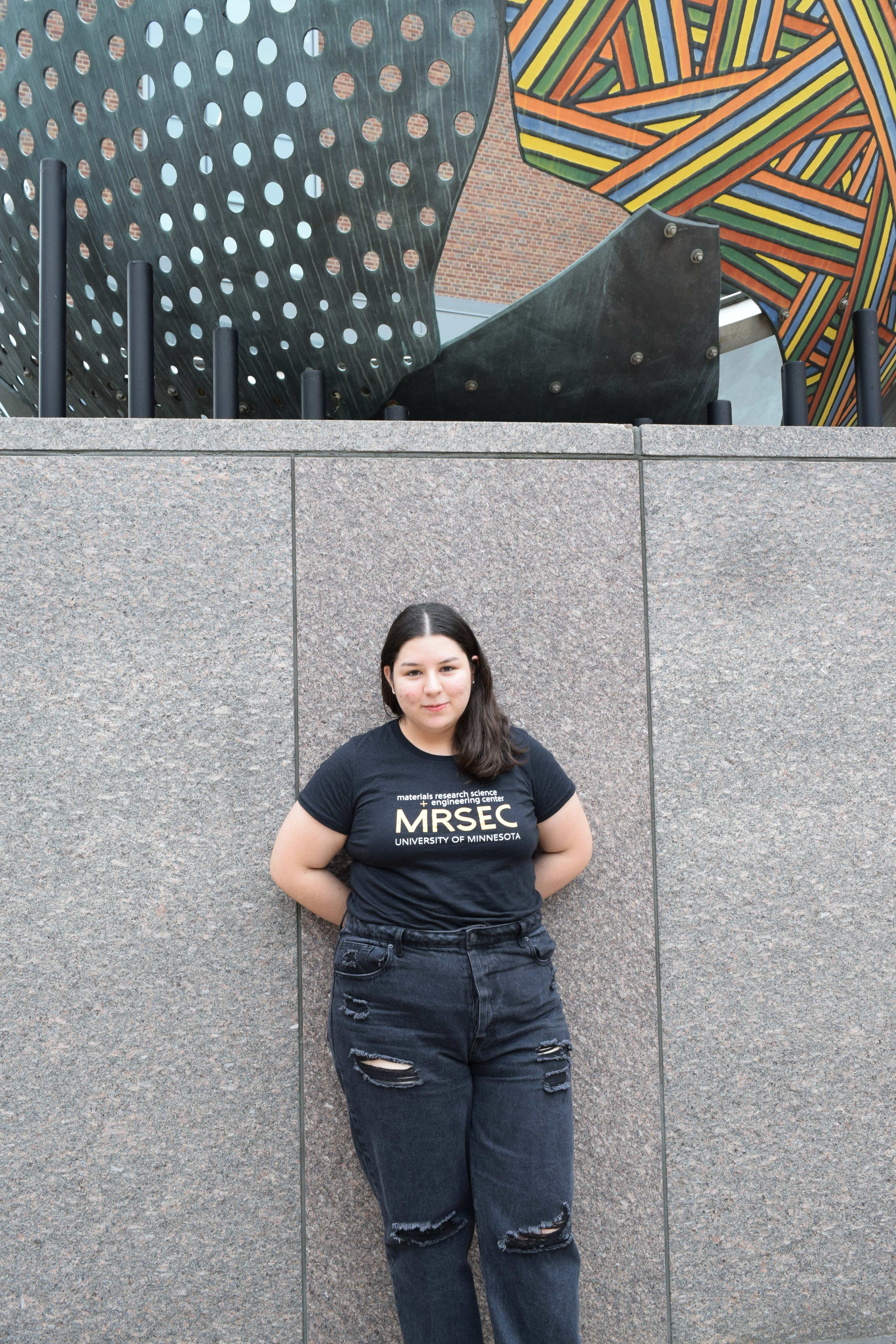
Home Institution:The University of Texas Rio Grande Valley
REU Mentor: Vivian Ferry
Improving Dispersions of Silicon/Silicon Dioxide Quantum Dots
Luminescent Solar Concentrators (LSCs) are devices that can generate renewable electricity and are composed of a transparent waveguide which is coated with a luminescent solution. Silicon Quantum Dots (Si QDs) are semiconductor nanocrystals that broadly absorb UV light and photoluminesce near-infrared light. Si QDs can suit LSC applications as they are nontoxic, are made from an abundant element, and have succeeded in renewable energy technology. We use nonthermal plasma to synthesize Si QDs, but as-synthesized, Si QDs have a high defect density. A silicon dioxide (SiO2) shell can protect the Si QD core and reduce the defect density. Unfortunately, Si/SiO2 nanoparticles still agglomerate due to the nonpolar silicon hydride and polar silanol surface groups that prevent dispersion in either polar or nonpolar solvents. This work focuses on developing a method for the Si/SiO2 QDs to stay in a stable, homogeneous mixture. This study varied different aspects of the dispersion by experimenting with different ligands, pH levels, and solvents. We characterized the solutions by using FTIR, UV-Vis, and PL spectroscopies. We concluded that using PEG-Silane as a ligand in an acidic environment with a polar solvent led to a stable, homogeneous mixture with a high photoluminescence intensity.

Home Institution:University of California, San Diego
REU Mentor: Turan Birol
Pressure-induced Transition of M2X Compounds into Topological Insulators
Topological insulators are materials which have electronic properties leading to the mobility of electrons being limited to the surface of the material. Zintl phase materials of the form M2X (M = Ca, Ba, Sr, and X = Sn, Ge, Pb) have been the subject of limited prior research due to their potential to transform from topologically metallic materials into topological insulators, but the full extent of the conditions that cause this transition is not yet studied. In this experiment, the role of pressure on the transition of M2X compounds from topologically metallic to topologically insulating materials will be analyzed. Specifically, density functional theory will be used to calculate the band structure of M2X materials under various pressures. This will allow for a determination of the wave function of these types of molecules. Once the wavefunction is known, the materials can be analyzed further to determine whether they form nontrivial topology under pressure, indicating whether they are topological insulators. It is anticipated that increased pressure will induce the transition of M2X materials into topological insulators, and in demonstrating this, a greater understanding of the electronic properties of M2X materials will be gained.

Home Institution: University of Puerto Rico at Humacao
REU Mentor: Timothy Lodge
Formation of Block Copolymer Micelles in Ionic Liquids via Cosolvation
Block copolymers self-assemble to form a range of micellar nanostructures in a solvent that is selective to one of the polymer blocks. Block copolymer micelles have been extensively studied for uses in drug delivery, nanomedicine, and industrial applications. The goal of this project is to study the formation of diblock copolymer micelles in ionic liquids using the cosolvent method. The system consists of 1,2-polybutadiene-b-poly(ethylene oxide) block copolymers, an ionic liquid, 1-ethyl-3-methylimidazolium bis(trifluoromethylsulfonyl)imide ([C2MIM][TFSI]), and a cosolvent, tetrahydrofuran (THF). Initially, the samples are prepared by dissolving diblock copolymers in a mixture of THF and ionic liquid in equal weight proportions. Here, only free polymer chains are present in the solvent mixture. Sample preparation and experiments will be performed at room temperature. The slow evaporation of THF will induce the formation of block copolymer micelles. Dynamic light scattering measurements will be performed to determine the hydrodynamic radius of the micelles at various stages with different cosolvent compositions. The composition of the cosolvent in the sample will be obtained by taking a mass difference and by performing nuclear magnetic resonance spectroscopy. Moreover, transmission electron microscopy will be used to confirm the morphology and size of micelles formed at the final stage. It is expected that a gradual increase in the size of the micelles will occur with a decrease in cosolvent composition. This study will help us better understand the mechanism behind block copolymer micelle formation and equilibration.
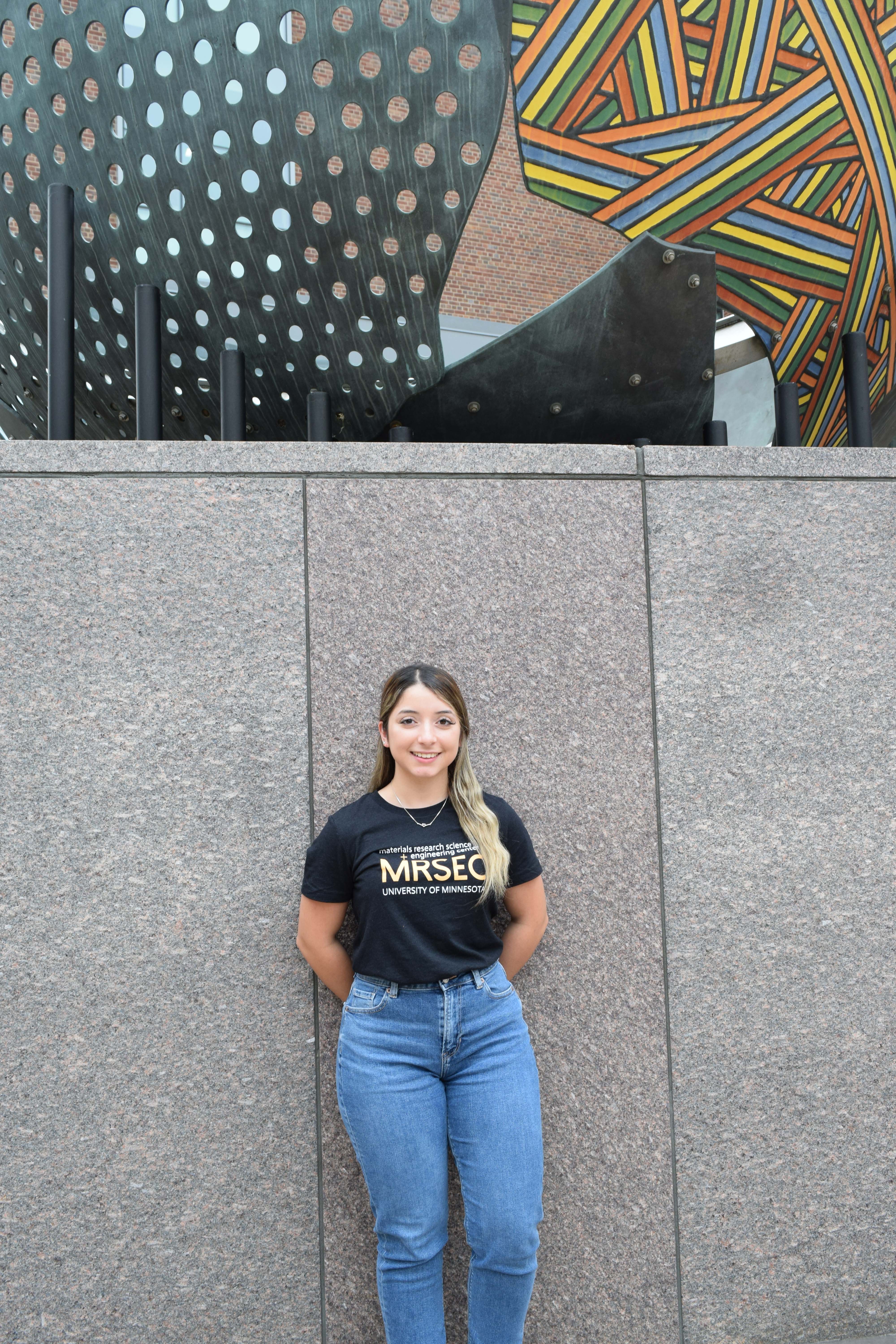
Home Institution: University of Texas Rio Grande Valley
REU Mentor: Michelle Calabrese
Tuning degradation and drug release in thermoresponsive hydrog
While oral antibiotics are the current standard treatment for middle ear infections, such administration has numerous harmful side effects. Alternatively, recent efforts have turned to biocompatible gels that can be injected directly into the ear, reducing side effects, and improving ease of administration in children. This work focuses on Poloxamer 407 (P407), a water-soluble, non-ionic triblock polymer that is commonly utilized as a pharmaceutical ingredient. With an increase in temperature, P407 chains in water arrange into spherical micelles. With further temperature increase, these formulations gel as the micelles pack into ordered structures. This gelation can be exploited to design drug-loaded formulations that can be injected at room temperature and then gel near body temperature. This work evaluated the rheological and structural changes in P407 gels upon addition of clinically relevant small molecules with the ultimate goal of forming an injectable gel that adheres to the eardrum to treat ear infections. Here, polymer assembly as a function of temperature and small molecule content was characterized using rheology, small-angle X-ray scattering, and differential scanning calorimetry. In addition, a Franz diffusion cell was used to show that these gels remain stable throughout the course of delivery.
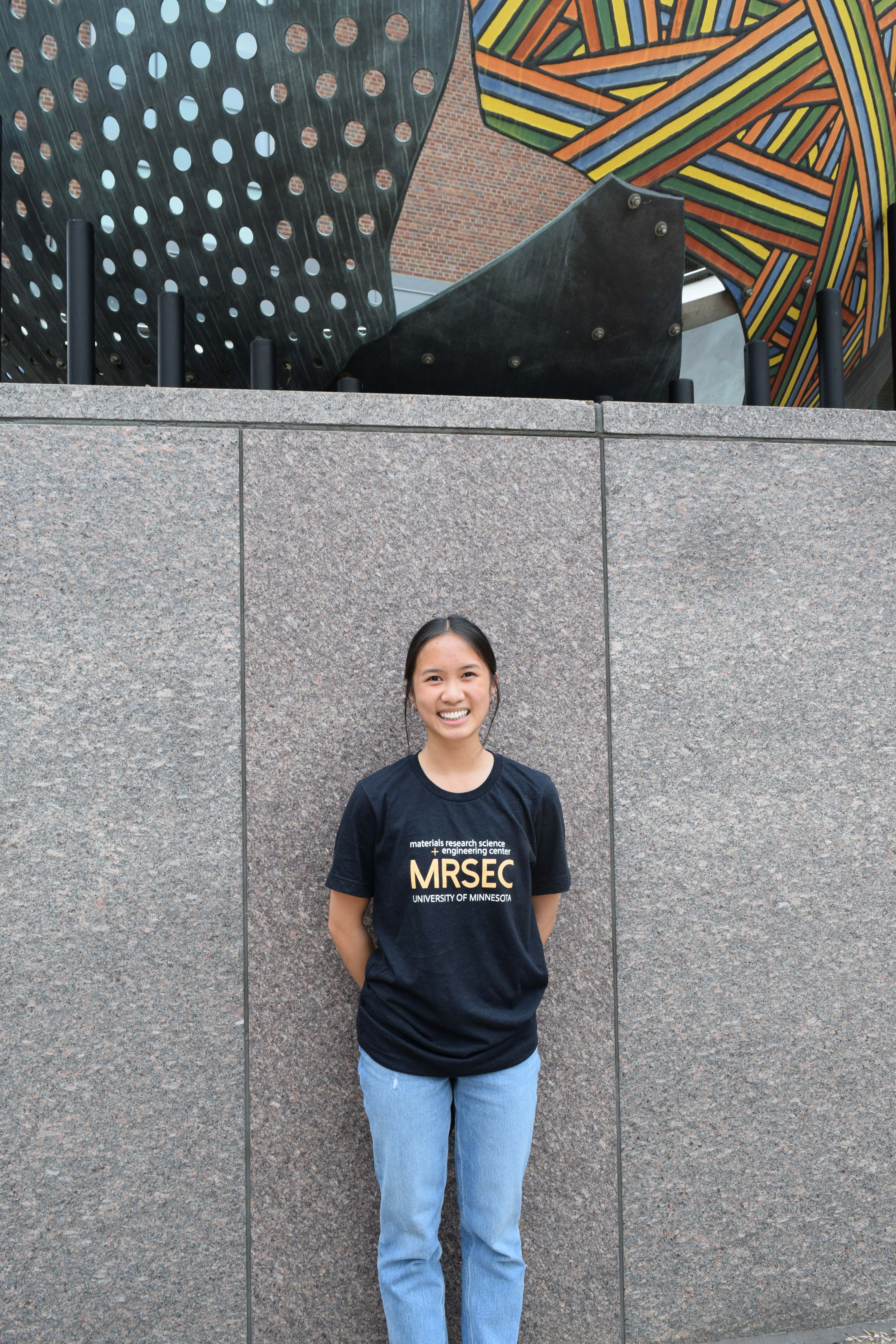
Home Institution: The University of Washington
REU Mentor: David Poerschke
Synthesis, Microstructure Stability, and Phase Behavior of Al-Containing Refractory Multi-Principal Element Alloys
Refractory multi-principal element alloys (MPEAs) have the potential for high-temperature applications due to their increased yield strength at elevated temperatures compared to other commonly used alloys. MPEAs are composed of at least five elements with 5-35 at% concentrations each. Those consisting of refractory metals are usually BCC solid solutions and the addition of aluminum can lead to precipitation of a higher strength B2 phase. The B2 phase forms coherently to the BCC solid solution and the resulting microstructures have been shown to provide superior combinations of yield strength and ductility under 1000 °C compared to BCC alloys. Five alloy compositions (Al0.25NbTaTiZr, Al0.5NbTa0.8Ti1.5V0.2Zr, AlMo0.5NbTa0.5TiZr, Al0.75NbTi3VZr1.5, Al0.75Hf0.5Nb0.5Ti2VZr) were fabricated by arc melting and annealed at 1200 or 1400 °C to form solid solution phases. The MPEAs were subsequently annealed at 600 °C to grow the precipitating phases. The samples were characterized by XRD, SEM, and EDS to identify the phases and microstructures. Analysis revealed that only Al0.25NbTaTiZr, Al0.5NbTa0.8Ti1.5V0.2Zr, AlMo0.5NbTa0.5TiZr formed cross-hatched patterns composed of a BCC and a B2 phase, while the other two exhibited a single BCC phase. After the 600 °C anneal, only AlMo0.5NbTa0.5TiZr retained the cross-hatched pattern, whereas the microstructures changed, or different phases appeared for the other MPEAs.
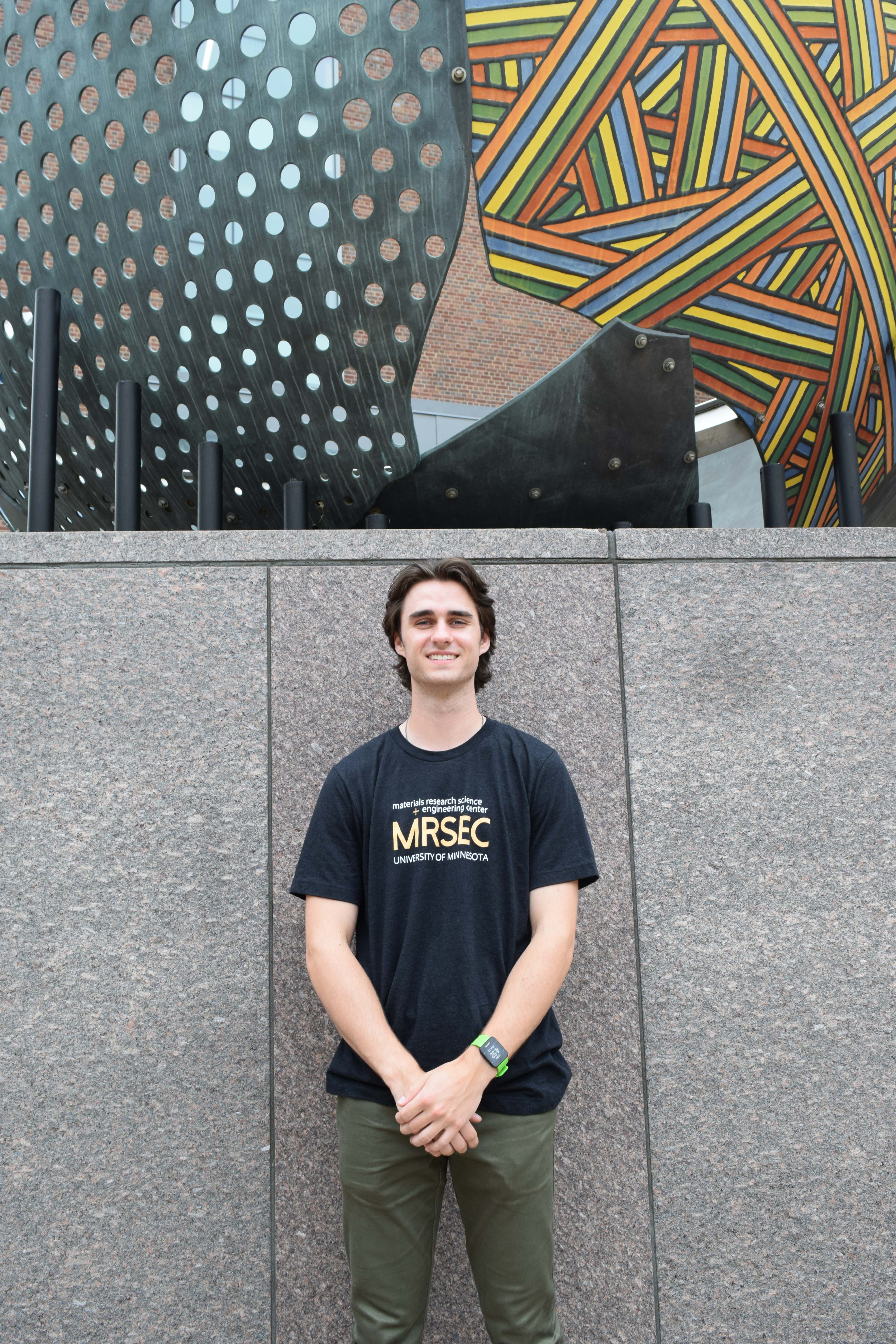
Home Institution: Clarkson University
REU Mentor: Mahesh Mahanthappa
Exploration of Homo-block-Coreshell Bottlebrush Polymer Morphology
Block copolymers exhibit a wide range of morphologies formed by thermodynamically-driven self-assembly. These morphologies offer a route for sub-12 nm nanolithographic patterning. This project aims to create unique morphologies that are not intrinsic to linear block copolymers through the use of a block bottlebrush polymers. These bottlebrushes consist of a core-shell brush architecture segment covalently bonded to a homopolymer brush segment. Core-shell macromonomers from sequential ring-opening transesterification polymerization (ROTEP) of ε-decalactone and D,L-lactide initiated from exo-5-norbornene-2-methanol. The homopolymer macromonomer structure uses the same norbornyl alcohol initiator for ROTEP of D,L-lactide. These macromonomers are grafted-through using sequential ring-opening metathesis polymerization (ROMP) of the diblock macromonomer followed by lactide macromonomer to form the desired bottlebrush. Characterization of these polymers has been achieved through 1H NMR and size-exclusion chromatography (SEC) to determine side chain and backbone degrees of polymerization and dispersities. Small-angle X-ray scattering (SAXS) patterns reveal a lamellar phase with a domain spacing range of 14-23 nm, which has been attributed to the lamellar spacing of the core-shell brush block. Extremely small-angle X-ray scattering (ESAXS) was used to investigate a potential superstructure that contains the observed lamellae. Future analysis includes microscopy imaging to visually identify and confirm SAXS microphases.
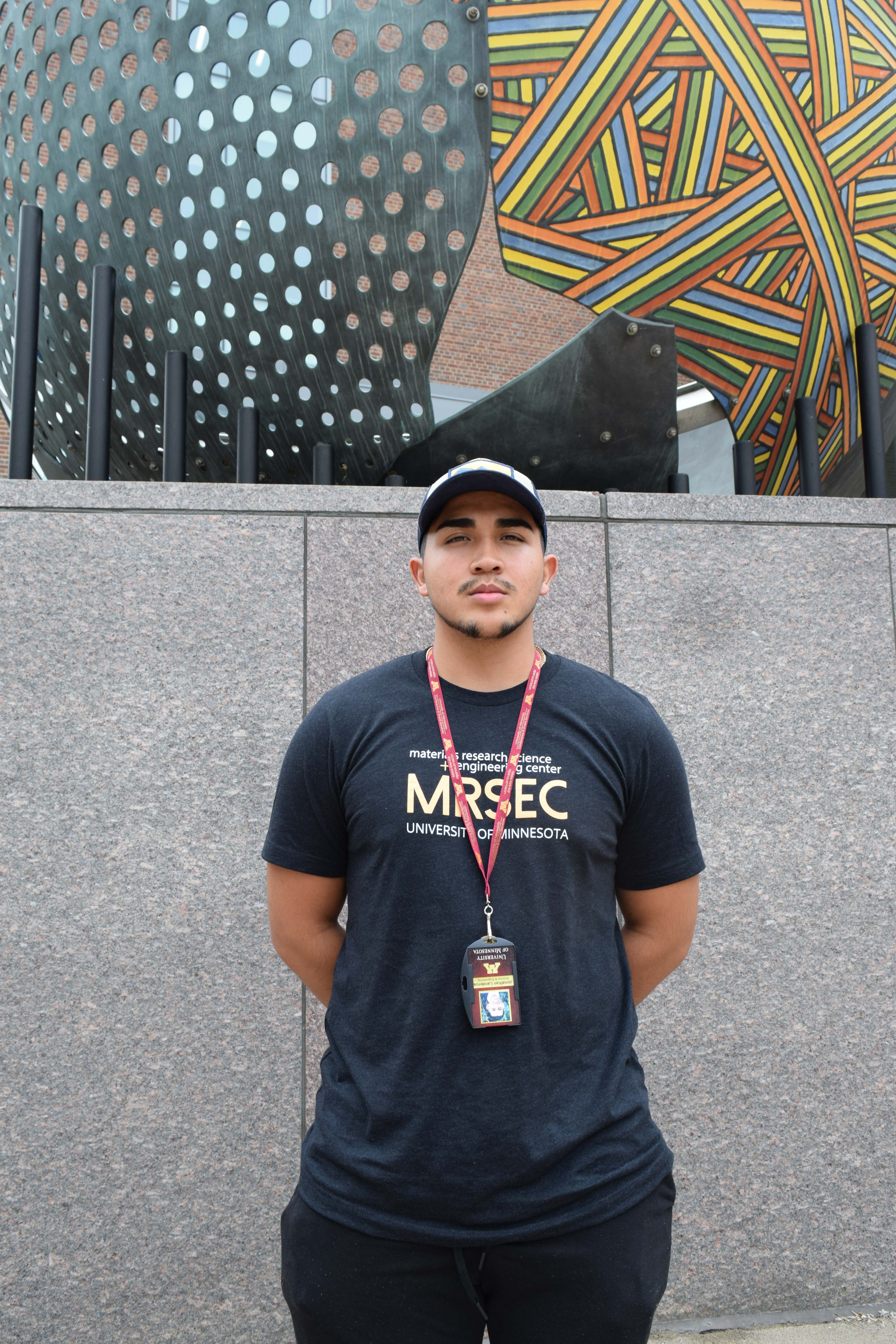
Home Institution: University of Texas at El Paso
REU Mentor: Bharat Jalan
A Scientific Instrument that Analyzes Metal Acetylacetonate (acac) Precursors for SSMOMBE
Establishing entire stoichiometric control over complex materials within Molecular Beam Epitaxy (MBE) is possible by using sold organic compound precursors. This method synthesizes ultra-low vapor pressure materials and oxidizes them with the supply of complex oxides through an effusion at low temperatures. The purpose of this project is to run an assembled scientific instrument that will allow for metal acetylacetonate precursors or organic sources to be analyzed by quantifying the evaporation/sublimation (vapor pressures) of the compounds and their impurities. This test chamber was initially created and assembled using a CAD software called Solidworks. Once the instrument is properly run, Yttrium acetylacetonate [Co(acac)3] will be compared to Ruthenium acetylacetonate [Ru(acac)3]. Ruthenium acetylacetonate [Ru(acac)3] has successfully opened the growth window in previous experiments, allowing for pure perovskite structured epitaxial films to be made. The hypothesis surrounding the comparison of these two metal organic sources is that Co(acac) will contain similar characteristics as Ru(acac) by creating a stoichiometric ratio with the complex compound being mobilized and open the growth window allowing for controlled self-growth to occur. This will allow for a complete doping of the complex compound, resulting to an atomic precise quantum structure, aka a perovskite epitaxial film.

Home Institution: University of Maryland Baltimore County (UMBC)
REU Mentor: Michelle Calabrese
Magnetic Processing of Block Copolymers
Block copolymers (BCPs) are compounds formulated by combining blocks of chemically distinct monomers to create a polymer chain. In particular, poloxamers are triblock copolymers that exhibit hydrophobic and hydrophilic properties with a linear arrangement of polyethylene oxide (PEO), polypropylene oxide (PPO), and PEO. Poloxamers are important for drug delivery purposes, the creation of adhesives, and the creation of batteries for energy production. In this project, we examined how magnetic fields affect the directed assembly of poloxamers to improve their processing and enable new applications. Magnetic fields cause poloxamers to transition from a disordered to an ordered state—thus magnetic fields have the potential to be used to process highly ordered poloxamer geometries for various industrial applications. A poloxamer-water system was studied in this work; the poloxamer was dissolved in deionized water and observed by magneto-rheological experiments. Conditions used for the rheology experiments such as strain, frequency, and magnetic field were varied to explore different processing conditions to establish design parameters for poloxamer hydrogels. Consequently, rheology experiments indicate that there are predictable relationships between these processing conditions and the plateau moduli of the poloxamer-water system. These experiments demonstrate that the magnetic processing of BCPs has the potential to improve their tunability.
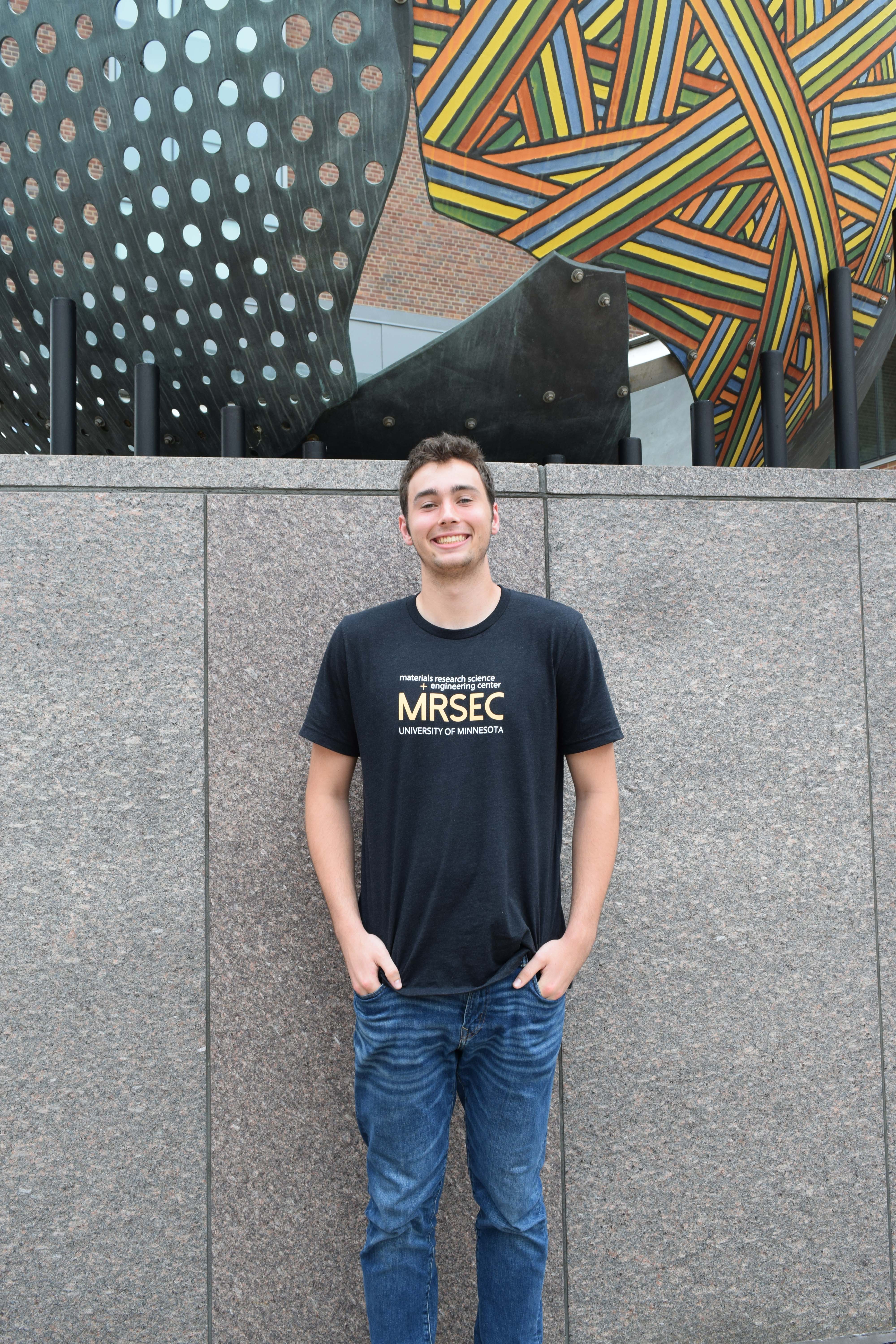
Home Institution: Augsburg University
REU Mentor: Jeff Walter
Interplay of Ferromagnetism and Weyl Semimetal Behavior in Shandite Co3Sn2S2 Single Crystals
Weyl semimetals have recently garnered interest in both condensed matter physics and materials science. Shandite Co3Sn2S2 is a ferromagnetic Weyl semimetal, making it a particularly interesting platform to study the interplay of magnetism and band topology. We have grown > 100 Shandite Co3Sn2S2 single crystals using chemical vapor transport methods. Through magnetometry we have confirmed our crystals are ferromagnetic with a Curie temperature of 175K. Further, we have found very square hysteresis loops along the c-axis with the remnant magnetization equal to the saturation magnetization, while magnetic fields applied in the a-b plane result in zero remnance and only ~30% saturation in 70 kOe. Together, this demonstrates a giant magnetocrystalline anisotropy of interest for further work. Using electron transport we have measured an anomalous Hall conductivity of 1400 S/cm, which is > 10 times larger than other ferromagnets of similar conductivity, supporting previous literature statements of a giant anomalous Hall effect in this material as a consequence of the interplay between ferromagnetism and Weyl semimetal behavior. Future work will explore whether these magnetic and electronic properties can be tuned by chemical substitutions as well as electrolyte gating.
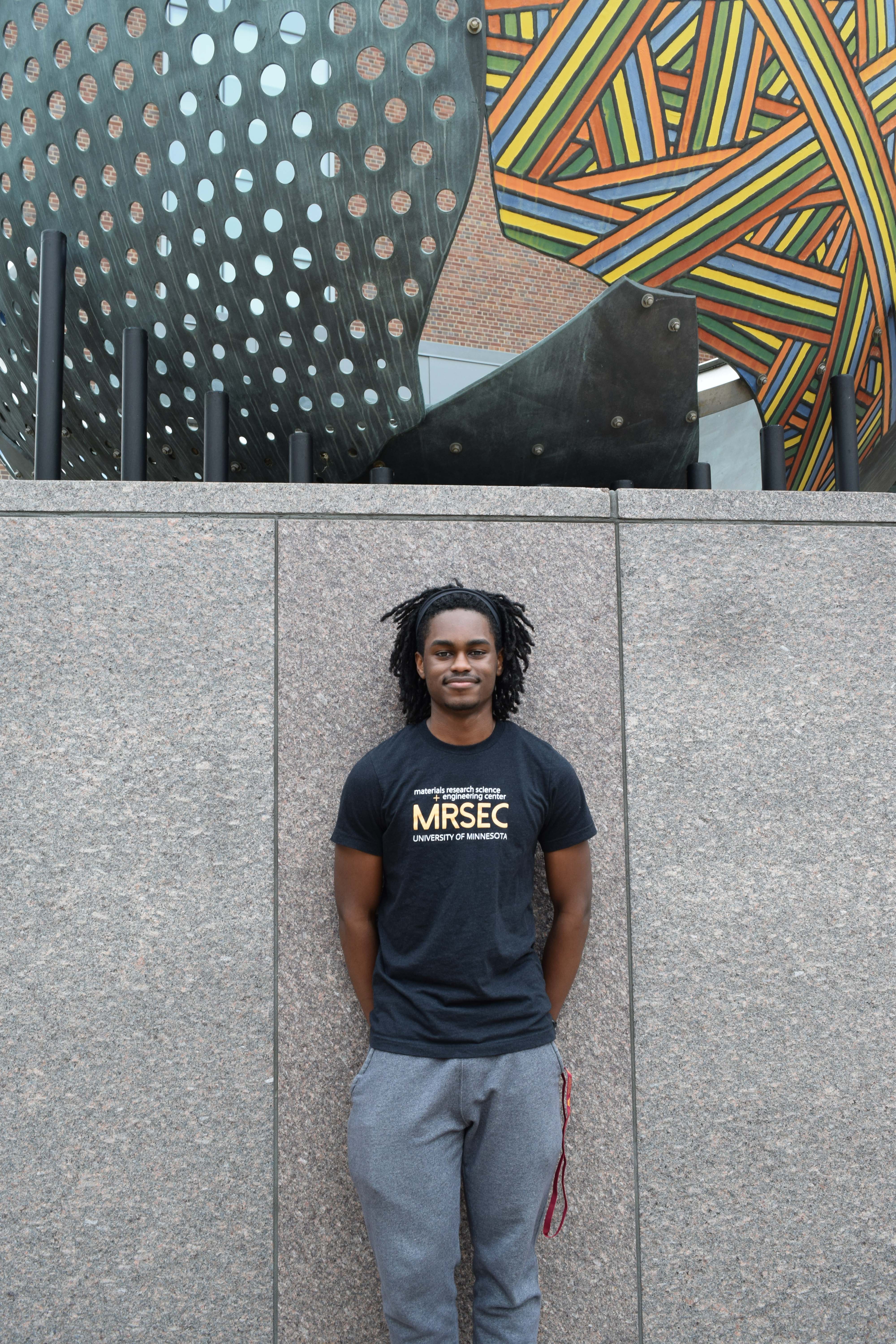
Home Institution: Augsburg University
REU Mentor: Jeff Walter
Shandite Co3Sn2S2 Single Crystal Growth & Characterization
We aim to create electronics that are low cost and made of environmentally responsible and abundant materials. Sulfur fitting these categories, we plan to combine it with transition metals to achieve unique magnetic properties. In this work our goal is to develop and optimize single crystal growth of shandite Co3Sn2S2 using a technique called chemical vapor transport. This technique is used by placing a reagent of Co, Sn, and S into an evacuated quartz tube, then placing it into a furnace which is split into a cold and hot zone allowing the reagent to vaporize and condense in the cold zone creating single crystals. We have synthesized over 100 single crystals that are typically shiny, ~10-100 um thick flakes ranging from 0.1 - 5 mm in lateral scale. Using an energy-dispersive x-ray spectroscopy (EDS) as well as x-ray diffraction (XRD), we characterize the stoichiometry and crystal structure, respectively. XRD confirms our crystals are indeed the shandite crystal structure with hexagonal lattice parameters of a = 5.35739 and c = 13.17928, which are consistent with previous reports. We have identified a calibration issue with our EDS measurements, preventing rigorous c
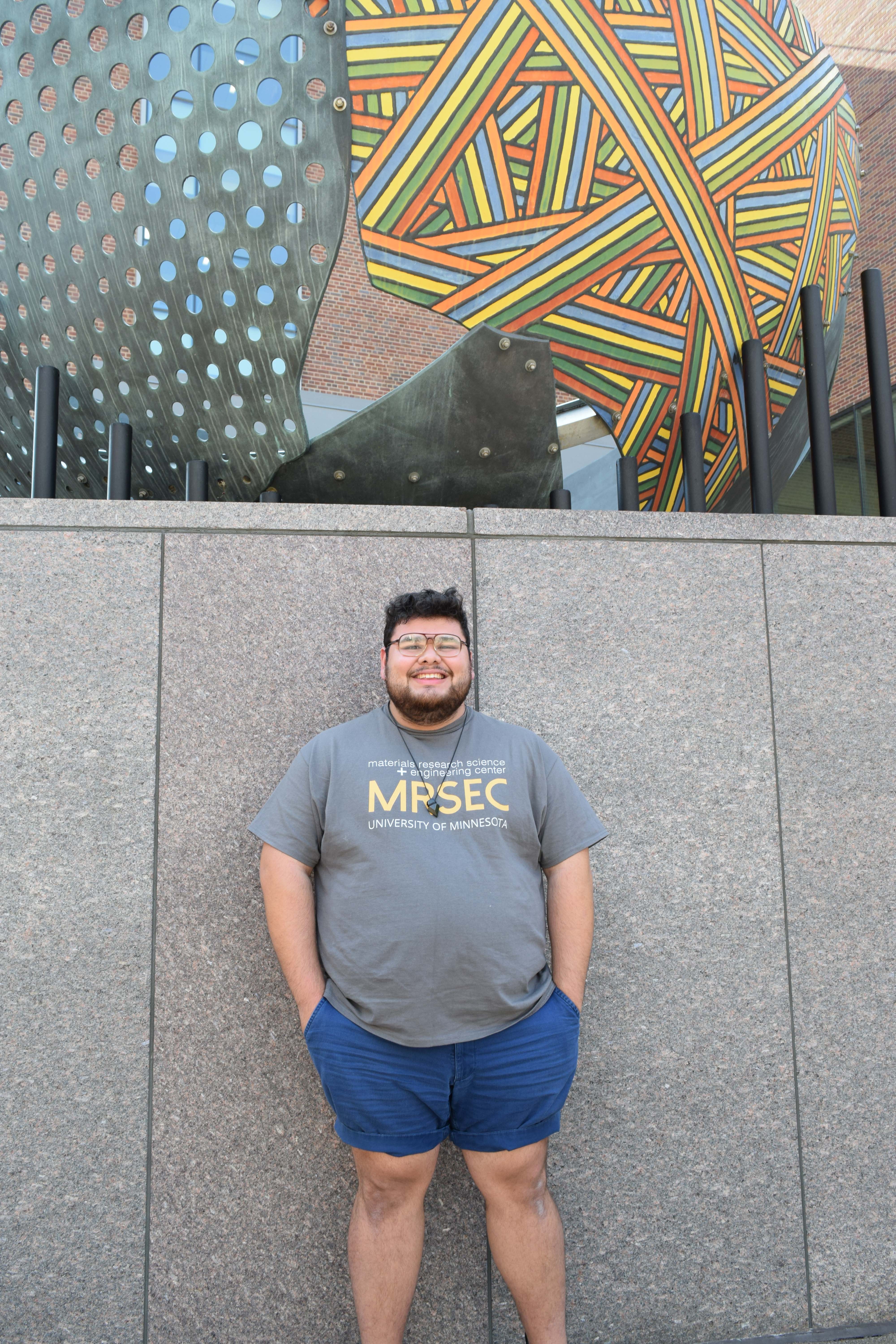
Home Institution: University of Texas Rio Grande Valley
REU Mentor: Michelle Calabrese
Role of solvent composition during processing of stimuli-responsive PNIPAM copolymers
With a greater need for energy efficiency, responsive polymer coatings are promising candidates for their scalability. Specifically, poly(N-isopropylacrylamide-co-3(trimethoxysilyl)propyl methacrylate (PNIPAM -co-TMA) has been studied for responsive glass coatings due to optical properties stemming from thermally reversible phase changes. These phase changes result from the abrupt coil-to-globule transition where aqueous solutions shift from clear to opaque with increasing temperature. The coil-to-globule behavior of PNIPAM outlined above is favorable for sprayable smart window coatings. However, the presence of TMA, which allows PNIPAM coatings to bind to glass substrates, can lead to irrecoverable opacity. Cloud point testing will be used to characterize the cyclical phase behavior of PNIPAM-co-TMA. The co-nonsolvency displayed by these systems provide access to the collapsed, opaque, state using solvent mixtures instead of temperature. This may be advantageous for coating processes. The mixtures will be subsequently processed via spin coating onto substrates with different solvent systems where contact angles will be analyzed. The contact angles as a function of temperature will display hydrophobic/hydrophilic shifts in the coating surface properties. Understanding the limitations of PNIPAM-co-TMA and the surface properties associated with the copolymer coating will allow this research to potentially impact the use of polymer responsive coatings to improve energy efficiency.

Home Institution: University of Texas Rio Grande Valley
REU Mentor: Jessica Lamb
Switchable System between Cationic and Anionic Polymerization
Switchable polymerization utilizes a universal chain transfer agent that is directed between different polymerizations with select monomers. Current techniques include separate methods between cationic/radical and anionic/radical polymerizations. The ongoing focus is to combine the cationic and anionic polymerization. Cationic polymerization can be completed by creating a photocatalyst that will undergo a catalytic cycle that can switch the polymerization on and off, while remaining stable with components of the anionic system. The first goal of this research project is to develop a new photocatalyst that will be less susceptible to nucleophilic degradation and will have the proper redox potentials. Ultimately, the cationic polymerization will be switchable with an anionic polymerization, which has limited research with thiirane monomers. Therefore, the second goal of this research is to create a wide library of thiirane monomers that can be used for anionic polymerization. In the future, this switchable polymerization will allow for the development of techniques to control polymerization mechanisms.
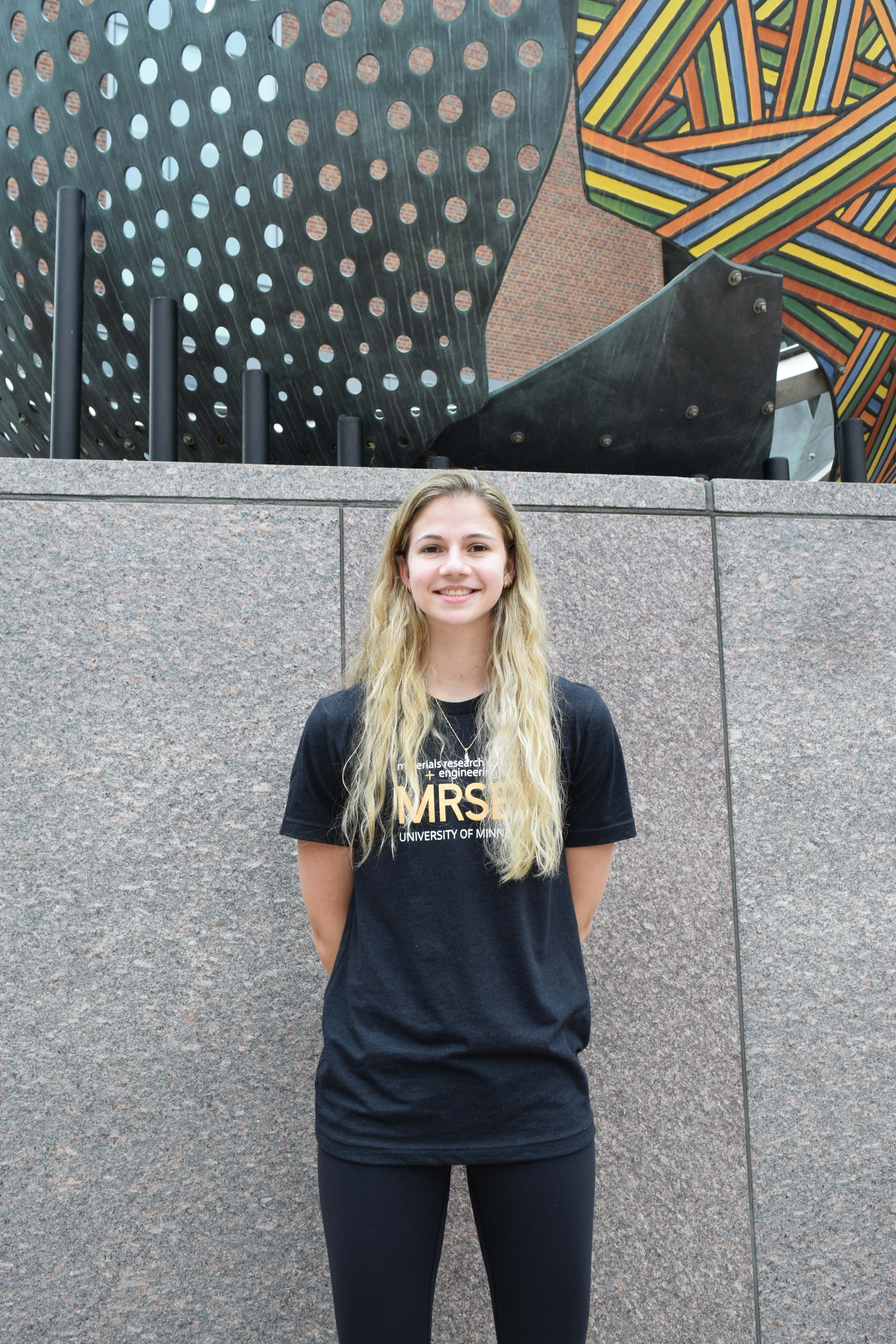
Home Institution: University of Pittsburgh
REU Mentor: Mahesh Mahanthappa
Identification of Lyotropic Bicontinuous Network Phases formed by a Plant-Based Surfactant
Amphiphilic surfactant molecules, with hydrophobic and hydrophilic portions, self-assemble into lyotropic liquid crystals (LLCs) upon addition of water. This process is driven by minimization of interfacial surface area, maximization of cohesive electrostatic interactions, and molecular packing at a constant density. LLC structure varies with amphiphile properties and water content. Structures of great interest are bicontinuous networks: LLCs with alternating, interpenetrating channels of hydrophobic and hydrophilic domains. Previous studies of inverse bicontinuous LLCs established the ability of these structures to encapsulate siRNA for therapeutic applications. The goal of this project was to synthesize a cationic surfactant derived from isophytol, a plant-based compound, and to understand its self-assembly behavior. This involved first identifying potential synthesis pathways and analyzing their feasibility in terms of safety, yield, and purity. Next, small-scale reactions were performed to produce the target surfactant, and the resulting chemical structure was verified with NMR and elemental analysis. Finally, the surfactant was combined with various amounts of water to form LLCs. These LLCs were analyzed with small angle X-ray scattering (SAXS) to characterize their structures and identify favorable conditions for self-assembling bicontinuous network phases.
School: White Bear Lake High School
Mentor: Jane Wissinger
Title: Synthesis and Applications of Iron Magnetic Nanoparticles in the High School Chemistry Classroom
Iron magnetic nanoparticles (Fe MNPs) were synthesized utilizing a novel procedure that can be performed in a high school chemistry lab. Iron (II) sulfate heptahydrate served as the source of Fe, and plant-derived starches were used as both a stabilizing and reducing agent. Three different starches, potato, corn, and tapioca, were utilized. The physical properties of the Fe MNPs, including color and magnetic strength, were then analyzed. The type of starch used did not affect the color or magnetic strength. However, the time the wet Fe MNPs were exposed to air did affect the color and magnetic strength of the nanoparticles. Finally, in order to explore real-world applications of Fe MNPs, the Fe MNPs were used to degrade rhodamine b and methylene blue dyes. Connections to the high school chemistry curriculum, considerations for the high school lab, and potential extensions were explored throughout the experiment.
School: Waconia High School
Mentor: Vivian Ferry
Title: Optical Properties of Mechanically Altered LSCs
Luminescent Solar Concentrators (LSCs) are a large area light harvesting device. These LSCs send this concentrated light into a thin strip of photovoltaic cells to generate electricity. The surface of LSCs can be damaged when placed outside in the elements over a period of time. We explored how mechanical alteration affected the transmission and attenuation of the LSCs under various wavelengths of light. We utilized transparent acrylic slides that are integrated with inorganic florescent dyes for our LSCs. We then applied various amounts of mechanical alteration to the backside of the acrylic LSC using sandpaper. We found that mechanically altering the back surface does not significantly reduce the concentrated photoluminescence while it drastically reduces the intensity of transmitted light. High School students will be asked to create an experiment that is based upon our research. They will be altering the surface of their LSCs so that they may measure the optical properties under various light sources using the light sensor on their smartphones. This is an engaging project that fits well within new Minnesota education science standards that introduces students to the concepts of light, optics, and green energy through the use of LSCs.
School: Thomas Edison High School
Mentor: Mark Distafano
Title: An Example of Phenomenon-Based Learning Through the Exploration of Protein Prenylation in Algae
The 2019 Minnesota State Science Standards are shifting focus from content-driven learning to the use of scientific practices to explore and understand new phenomena. This project will use protein prenylation in algae as an anchoring phenomenon in both biology and chemistry
courses to support a collaborative multi-year project. Students in chemistry will learn the synthesis of a fluorescent prenylation probe through a click reaction. Students in biology will use a synthesized probe to prenylate proteins in algal cells and visualize the resulting
product using gel electrophoresis and staining.
School: Thomas Edison High School
Mentor: Mark Distafano
Title: An Example of Phenomenon-Based Learning Through the Exploration of Protein Prenylation in Algae
The 2019 Minnesota State Science Standards are shifting focus from content-driven learning to the use of scientific practices to explore and understand new phenomena. This project will use protein prenylation in algae as an anchoring phenomenon in both biology and chemistry courses to support a collaborative multi-year project. Students in chemistry will learn the synthesis of a fluorescent prenylation probe through a click reaction. Students in biology will use a synthesized probe to prenylate proteins in algal cells and visualize the resulting product using gel electrophoresis and staining.
School: Thomas Edison High School
Mentor: Mark Distafano
Title: An Example of Phenomenon-Based Learning Through the Exploration of Protein Prenylation in Algae
The 2019 Minnesota State Science Standards are shifting focus from content-driven learning to the use of scientific practices to explore and understand new phenomena. This project will use protein prenylation in algae as an anchoring phenomenon in both biology and chemistry
courses to support a collaborative multi-year project. Students in chemistry will learn the synthesis of a fluorescent prenylation probe through a click reaction. Students in biology will use a synthesized probe to prenylate proteins in algal cells and visualize the resulting
product using gel electrophoresis and staining.
UMN MRSEC
435 Amundson Hall, 421 Washington Ave. SE, Minneapolis, MN, 55455
P: 612-626-0713 | F: 612-626-7805